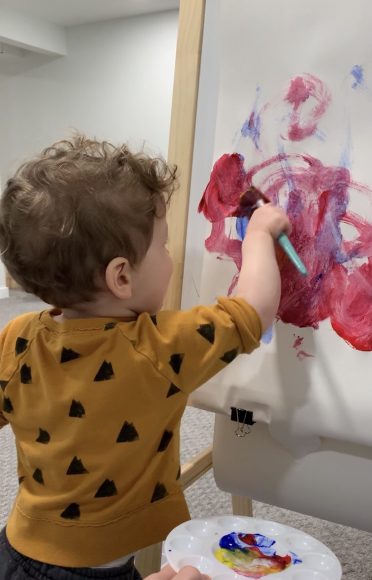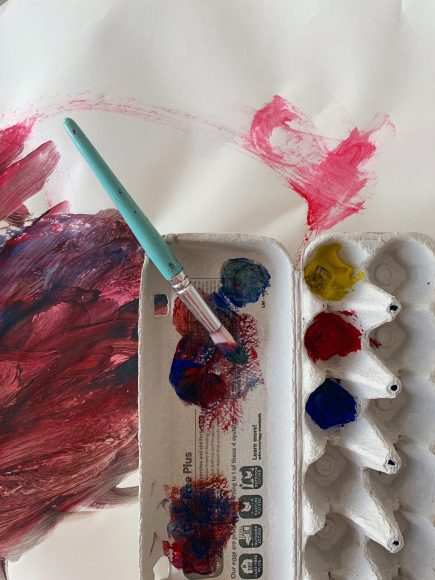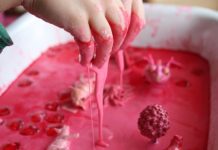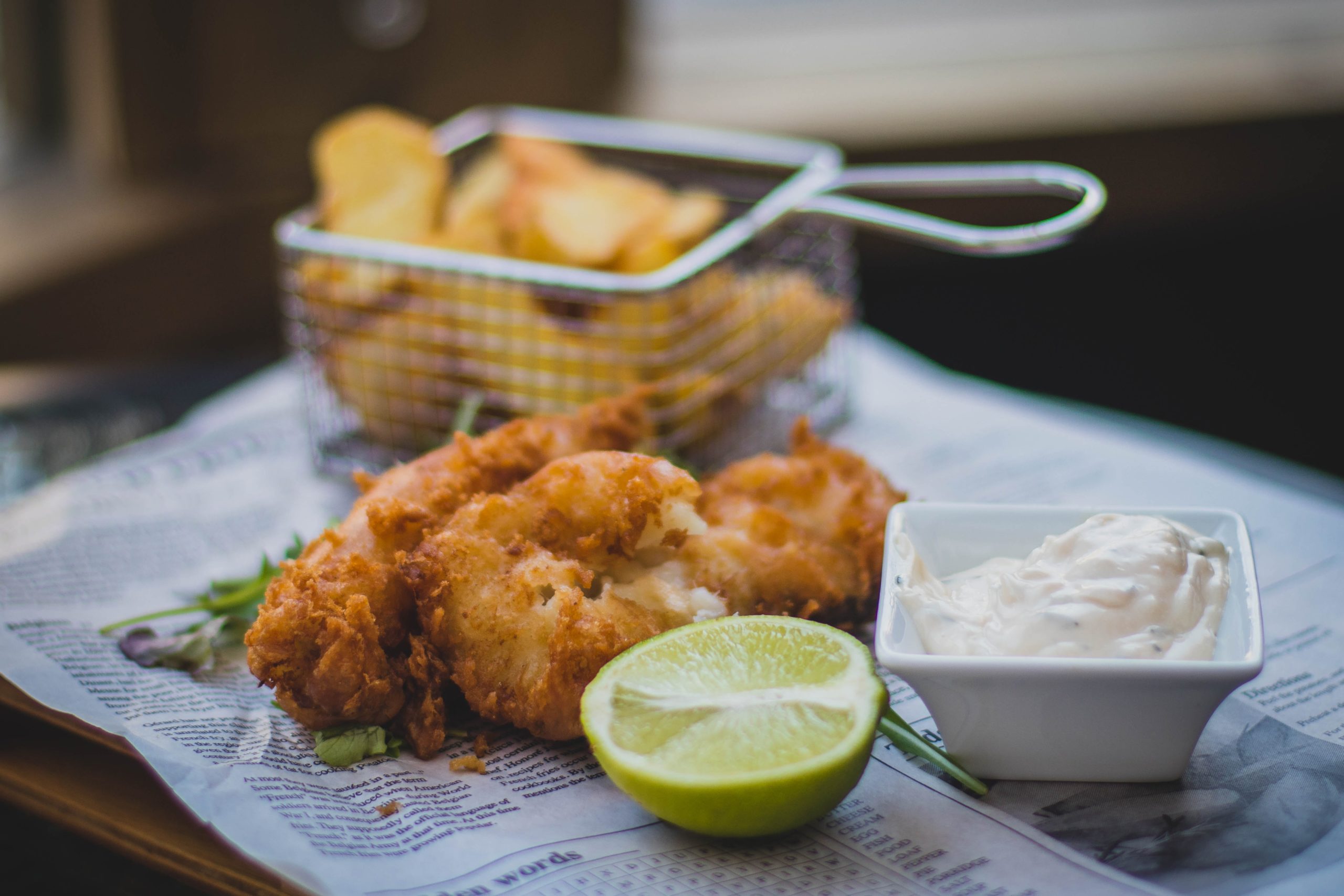Painting with little artists may require some patience, but the payoff is well worth it.
Over the years, I have talked with parents and caregivers who want their young children to experience painting and flex their creative muscles but are nervous to do so in their own homes. As the parent of a toddler myself, I now understand this daunting task and the fear that comes along with it. Toddlers can be unpredictable and full of vigor, which might not be a combination where you want to add paint. However, I believe this is a worthy challenge with a plethora of benefits. In addition to the value of expressing themselves, toddlers develop problem-solving and eye-hand coordination skills through painting. With a few tips and some structure, I believe there is a way to foster expressive creativity with ease while painting with young artists.

- Create in a space and in clothes where young artists can make a mess. It doesn’t matter where it is, the garage, the basement, outside! Painting during the toddler years is very gestural, so they need room to move their bodies with the freedom to spill and splatter. Drop cloths work wonders under an easel. Large rolls of paper or pieces of cardboard on a table provide coverage and even more room for your artist to paint.
- Use a painting instrument that your child feels comfortable using. For some children, the feeling of paint on their hands is uncomfortable, and a thick-handled brush might work better for them. For others, the feeling of paint on their hands and fingers might be inspiring! Try out options to see what works for your artist. Thick-handled brushes can be found at most craft stores, but a small house painting brush can work in a pinch.
- Stick to the primary colors if you can. This helps children experiment with color mixing without the distraction of secondary colors. When they have explored mixing colors, add in black and white paint to try lightening and darkening colors.
- Most toddlers are in the pre-symbolism phase of painting. Just as there are developmental milestones for movement and literacy, the same goes for mark-making, and every child will move through them at a different pace. In this stage, children are focused on lines, movement, cause and effect, and the process of painting rather than the product. This is what they are supposed to be doing! As difficult as it can be, try not to assign meaning to their work. Point out where they mixed colors, describe the kinds of lines they made, and where they marked on the page to engage in conversation.
- Leave their art in an accessible place to continue working on at a later time. It can be tempting to finish a work of art when your child tells you they are “all done,” as my son likes to say. Instead, let them return to the same painting again. This can be a great way to model works in progress. To extend a painting experience, invite your child to experiment with different kinds of instruments, presenting each object one at a time. Paper tubes, blocks, natural materials, cotton swabs, pencil erasers–these can all be great objects to dip into paint and experiment with on the page.
So you’re ready to get messy? Here are a few basic items you need to start painting at home with your child. You probably have many of these items already!

- Washable paint in the primary colors, black, and white.
- Thick-handled paintbrushes.
- Palette or mixing tray. Egg cartons work well to separate paint colors, and the lid works as a mixing tray! Small plastic trays or cookie sheets are great reusable options.
- Large paper. Rolls of paper can be found at many craft stores. My favorite is the MÅLA Drawing Paper Roll at IKEA for $3.99, affordable, and lasts forever! The blank sides of used wrapping paper or packaging material are perfect recyclable options.
- Drop cloths. Old tablecloths, sheets, or tarps can give you peace of mind if you are nervous about paint getting on furniture or floors.
- Apron or smock. Have an old adult-sized t-shirt lying around? They make ideal painting smocks to protect clothing.
- Clothespins or masking tape. While not essential, these items can be helpful to anchor the paper to whatever surface you are working on. Since toddlers are so gestural in their painting, the paper can slide around easily. Clipping paper to an easel with clothespins or taping paper to a table can prevent that issue.










